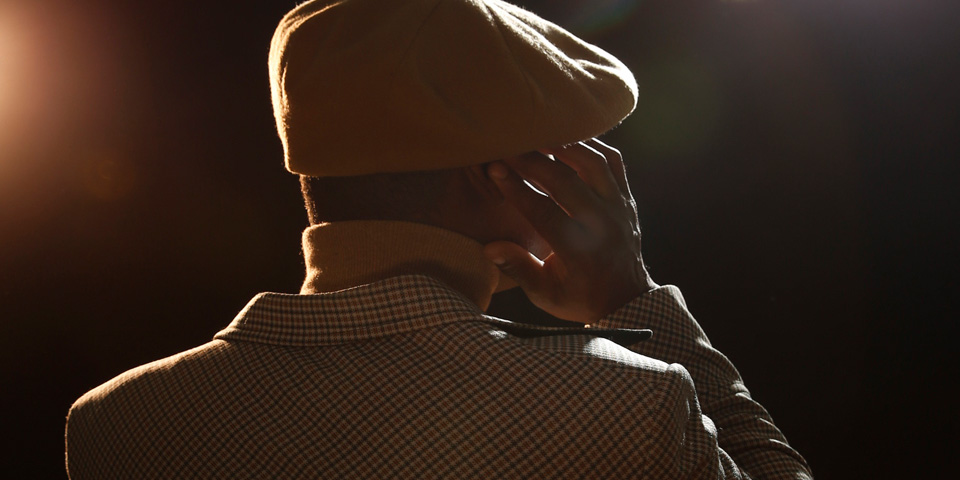
When I Think of Music
By Deanie Vallone
“When I think of music I think in totality, complete,” Donny Hathaway said in a 1973 interview.
“You know, from the lowest blues to the highest symphony. So what I’d like to do is to exemplify each style of as many periods as I can possibly do.”
And he certainly did. Few musicians covered such a range of musical history and genre as Hathaway in his short, but powerful, career.
Born in Chicago in 1945, Hathaway came of age in a country dealing with the repercussions of World War II, amid the innovation and artistic excellence of Chicago’s Black Renaissance. At the age of three, he was sent to live with his grandmother in St. Louis, where his second home became the Trinity Baptist Church.
At church and at home, Hathaway showed an interest in, and talent for, music. “I hear the most beautiful music in my head,” he told his grandmother. A talented gospel singer herself, his grandmother immediately recognized Hathaway’s talents, and bought him a piano.
His time spent in the church and touring as a young gospel singer incorporated the preaching and singing tradition of the church into his musical styling.
In 1964, his upbringing and his talents brought him a scholarship to Howard University, where he studied music theory and education. There he trained in the European classical tradition; met a number of young artists who would be lifelong friends and collaborators (including Roberta Flack); and fell in love with Eulalah Donyll, whom he would marry after graduation.
Though Black vernacular music was excluded from the Howard curriculum, Hathaway and his friends held private gospel jam sessions after class. Through these clandestine sets, he soon added blues, jazz, and R&B, to his musical vocabulary.
After graduating in 1967, he went to work as an in-house writer, arranger, and musical director for his friend’s record label, Curtom Records. Meanwhile, he began working on his own music. In the 1960s, with the Civil Rights Movement in full swing, ongoing repression and violence led to nationwide protests and riots. Hathaway’s music responded to this discrimination and uncertainty with hope and love.
The same generosity of spirit fueled his collaborative impulse, and Hathaway was always the first to acknowledge the talented artists who helped bring his art to life. His first album, Everything is Everything, was released in 1970. As with much of his work, it was a group effort. He has also been noted for some of his extraordinary covers of other artists’ songs, though biographer Emily J. Lordi writes, “Styles can be imitated, but the history that sounded through Hathaway’s heavy, erotic, and soulful connection with his fans and his band was something else.” His chart-topping duets and collaborations included playing the organ for Aretha Franklin’s “Bridge Over Troubled Water” and “Rock Steady.” His most famous and successful collaboration, though, was with Roberta Flack. Described by music critic Rashod Ollison as “two music nerds with gorgeous voices and dazzling piano skills,” their prodigious musical talents and long-standing friendship led to the 1971 duet album, Roberta Flack & Donny Hathaway, which went gold.
Even though he was quick to collaborate and give credit where it was due, Hathaway always remained at the center of his music. His ability to evoke church in a secular setting spoke to the simultaneously sacred and political aspects of soul and blues music. Writer Ed Pavli contends that Hathaway “sung you a Black man’s life. […] He’d stare straight at your life and see it like you can’t and sing it like you don’t.”
Hathaway remained generous with his audiences throughout his career, a trait especially evident during the 1971 recording of Donny Hathaway Live at The Troubadour. Using traditional call-and- response, he made the audience part of the performance, creating an environment of support and cultural-emotional expression. “You all sound awful good to me,” Hathaway told them. In return, the liveliness of the crowd provided Hathaway a safe space to explore, re-invent, celebrate, and share his music.
The highs that came with his successful collaborations, inspiring both live and recorded music, soon fell under the shadow of mental illness. From 1973 to 1974, Hathaway was repeatedly hospitalized, diagnosed with paranoid schizophrenia. Though some have since speculated that he suffered from a different illness—perhaps bipolar disorder or depression— or simply succumbed to the stress of his new fame, many people who knew him at the time recalled Hathaway’s episodes of hallucinations and delusions.
Despite the diagnosis and subsequent treatments, he continued to perform on and off over the next few years. However, at least one reporter, Tim O’Brien, noted the new sound of Hathaway’s music, describing it as “kinky, herky-jerky…almost atonal pop…avoid[ing] clear melodic lines.” While these twisted melodies could have been a result of mental and emotional strain, they could easily have signified a self- reinvention. As his friend Sidney Barnes said, “The bigger the talent, the bigger the demons.”
In 1979, Hathaway died after a 15-story fall from his Essex hotel room window. Though ruled a suicide, much speculation surrounds the event, and many of his friends claim it could easily have been an accident, that Hathaway would never have taken his own life. Regardless, it was a stunning career cut short. Hathaway’s legacy lives on through the music of his first daughter, Lalah; the next generation of artists who have found inspiration in his music, such as Stevie Wonder and Luther Vandross; and the loving generosity that was his signature.
During a 1973 performance at Carnegie Hall, Hathaway called out to the audience, “Love comes in all different shapes, forms, and fashions. Love comes in all different ways. You just can’t put your finger on love—you don’t know what it is because…true love is a total thang.” Love may be difficult to capture or describe, but Hathaway’s music goes a long way towards expressing the ardor he felt towards his art, artists, and audiences.



